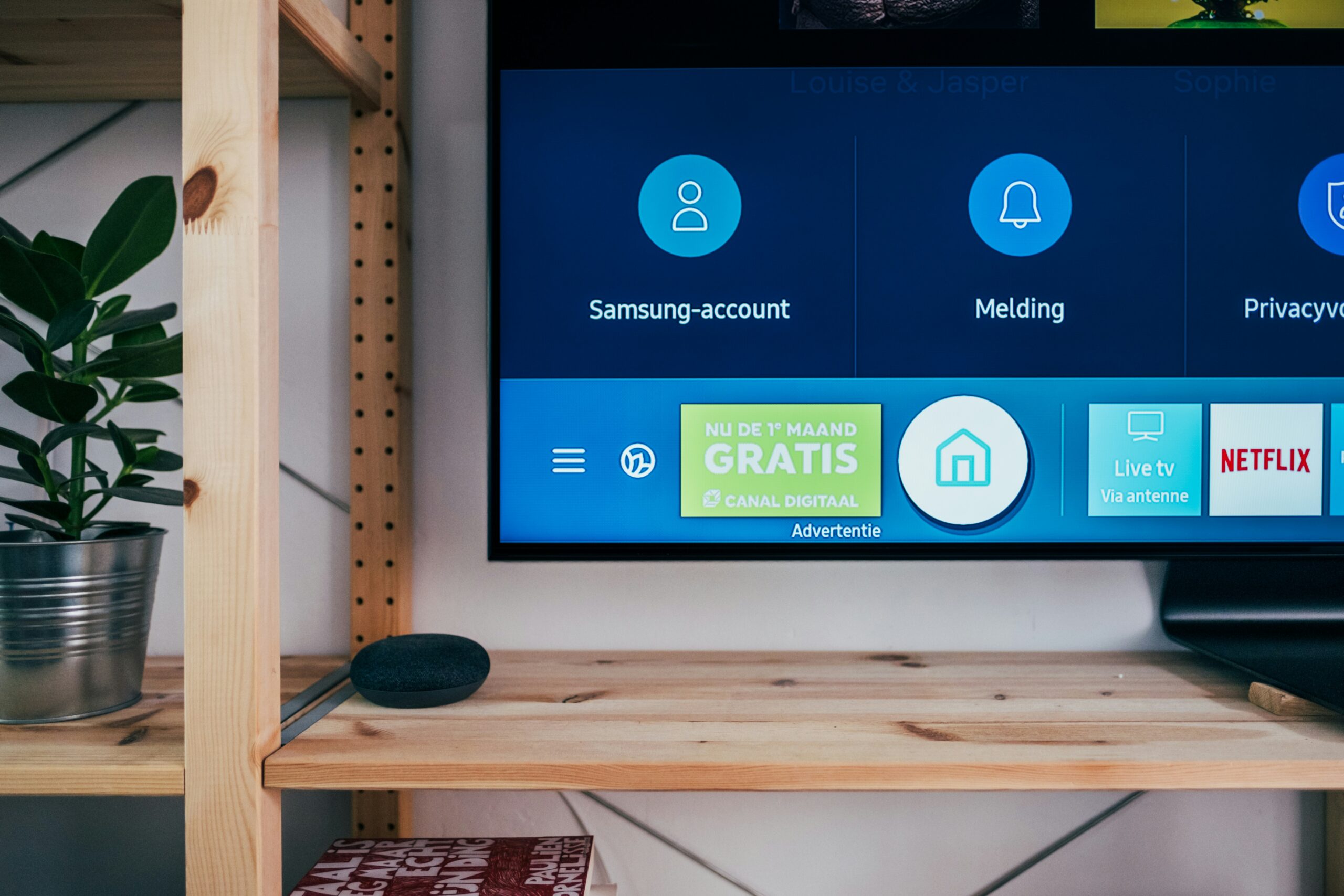
How I paid off $77K+ in student loans with my online business
When Laura Long and her husband sat down to look over their finances in late 2016, they discovered something that made their hearts stop.
After four years and thousands of dollars in regular payments on Laura’s student loans: “I owed $2,000 more than when I had started paying them off,” Laura says.
Flabbergasted, they kept crunching numbers to see what more they could do.
“It was like, ‘Oh, you can pay an extra $100 a month, and that will cut your payment down… from 40 years to 38-and-a-half years,’” Laura remembers.
The other thing Laura remembers: what it felt like to see that number staring back at her.
“It made me sick to my stomach,” she says. “All I could think was, ‘I can’t do that. I can’t have the government own my life.’”
How to pay off student loans by starting an online business
Together, Laura and her husband hatched a radical plan for Laura to pay off her student loans once and for all. They decided she should start an online business.
“We decided that I would join Zero to Launch,” Laura says. “I would create whatever this online business was going to be. And whatever I made from that business, it would all go toward getting these loans paid off.”
Eighteen months later, Laura submitted her final payment on her student loans — courtesy of her online business, Your Badass Therapy Practice.
A few months after that, we hopped on a video call to talk about how she did it: how she found her idea, and grew that idea into a business that helped her pay off $77K in loans in less than two years.
Let’s just say the excitementof being debt-free hadn’t worn off.

What it looks like when you pay off $77K in student loans: “I’m free!”
Find THE idea: “I want them to be chomping at the bit for what I have”
Laura wasn’t completely new to building something herself. By the time she started working on her business, she’d been in private practice as a therapist for three years.
“There are people way less smart than I am, and they have successful businesses,” she explains. “So I knew that I could be successful, whatever ‘success’ looked like for me.”
Knowing you can start A business is one thing. Knowing WHAT business to start is another.
To get herself started, Laura completed one of the first exercises we recommend in Zero to Launch.
“I sent out an email to as many friends and family members as I could think of whose opinions I valued,” she says. “I asked them some basic questions: ‘What do you think I’m good at? If you were introducing me to somebody, what are some things that you would say about me?’”
By the time the responses came in, Laura had a list of 10 possible ideas that she could pursue.
Up next: picking one idea, and going deep into the world of those customers to understand:
- Who are these people?
- What are their burning pains?
- Is there a solution here that I can provide that they would be willing and able to pay for?
The first idea Laura explored was communication and conflict resolution for couples. It seemed like the obvious fit for a couples therapist. But after about two months of immersion research, Laura decided that something wasn’t quite clicking.
“I knew that creating a course was the end goal. And what I discovered is that couples typically are not looking up resources together. It’s usually one partner, most of the time the wife, and she’s kind of dragging her husband along.”
The prospect of half of her customers having to drag the other half into using her product wasn’t what Laura had in mind for her business.
“I don’t want to have to convince people to buy my product,” she says. “I want them to be chomping at the bit for what I have.”
Laura’s first business idea didn’t get past the immersion phase. But she says that’s okay — good, even.
“I’m so glad I went through that, because otherwise I would have gotten so excited. I would have spent all this time creating this really in-depth program — and then launched to crickets.”
With couples counseling resigned to the graveyard of ideas, Laura went back to her list of 10 ideas to see what else jumped out of her.
“A couple of the people who had responded to my initial email were other therapists in my area. They told me, ‘Oh my gosh, you were so helpful when I was starting my practice. You told me exactly what to do, what the steps were, and now I feel so confident,’” she remembers.
“I was like, ‘Well, I don’t think I know enough about that, but that seems interesting.’”
Size up the competition: “I focused on what I DID know”
Once she decided that helping other therapists launch their private practice was an idea worth pursuing, Laura’s next step was to see who else was already doing work in that space.
“There weren’t a ton, but there was definitely a handful,” she remembers. ”That was good, because it meant that there was demand.”
Rather than letting existing players scare her off, Laura thought of it as an opportunity to learn about what was possible in the space. She approached the competition with curiosity.
Curiosity — and a good spreadsheet.
“I created a spreadsheet of each coach I could find. I tracked what their offerings were, their shtick or their angle,” she explains. “That helped me figure out: ‘I really liked that this person offers this kind of thing, but this over here really isn’t something that I know about or care about.’ By looking at what already existed in the space, I was able to pick apart the pieces and figure out what really resonated with me and my knowledge.”
None of this is to say that seeing what other coaches were doing wasn’t intimidating. “It really seemed to me like these coaches had all the answers for everything,” Laura remembers.
How did she push past that, and keep from thinking that if these other, more experienced coaches were already out there, she shouldn’t even bother? “I focused on what I DID know,” she says.
“I may not have known all the intricacies that those other coaches knew. But I knew a lot about copywriting. I understood about pricing and value. So those two or three arenas that I felt really confident in, I decided to create a business that really focused on that: How to create a private practice that your clients are eager to come to every week.”
Know your audience: “I was stalking people’s questions”
Once she had confirmed that, yes, paying for help with your therapy practice was “a thing” and people were offering it — the next step was getting to know more about the therapists she wanted to help.
There were a lot of sleepless nights involved — but not because of the immersion process itself.
“I had pretty bad insomnia, because I had my first child earlier that year,” Laura explains. “She was awake a lot, and my sleep was sucky. So when I was awake at two in the morning and not able to sleep, I would just do immersion then.”
Laura’s most important fishing hole for learning about her customers: Facebook groups, where therapists would go to ask questions and look for advice on how to get their private practice off the ground.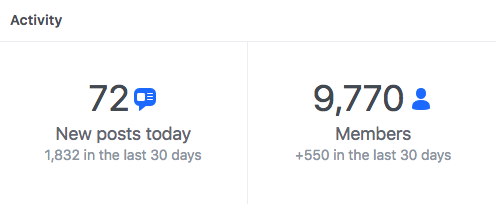
Metrics from the kind of Facebook group that Laura used to understand her audience of private therapists.
“I was stalking people’s questions,” she says. “If I knew the answer, I would provide the answer to the best of my ability, and see if people commented on that and what they said. But I wasn’t doing it for promotion. I didn’t HAVE a program to promote. I didn’t even have a website yet. It was straight immersion: who are these therapists, what are their pain points, what are they willing to pay for?”
Laura took her time creating her first piece of content. But by the time she did: “I already knew so much about what therapists are, what my target market was looking for, that it really wasn’t hard for me to create stuff.”
As for what her first piece of content was? “It was a blog post, and it was pretty contrarian,” she remembers. “It detailed all of the things therapists were wasting time worrying about with starting their practice.”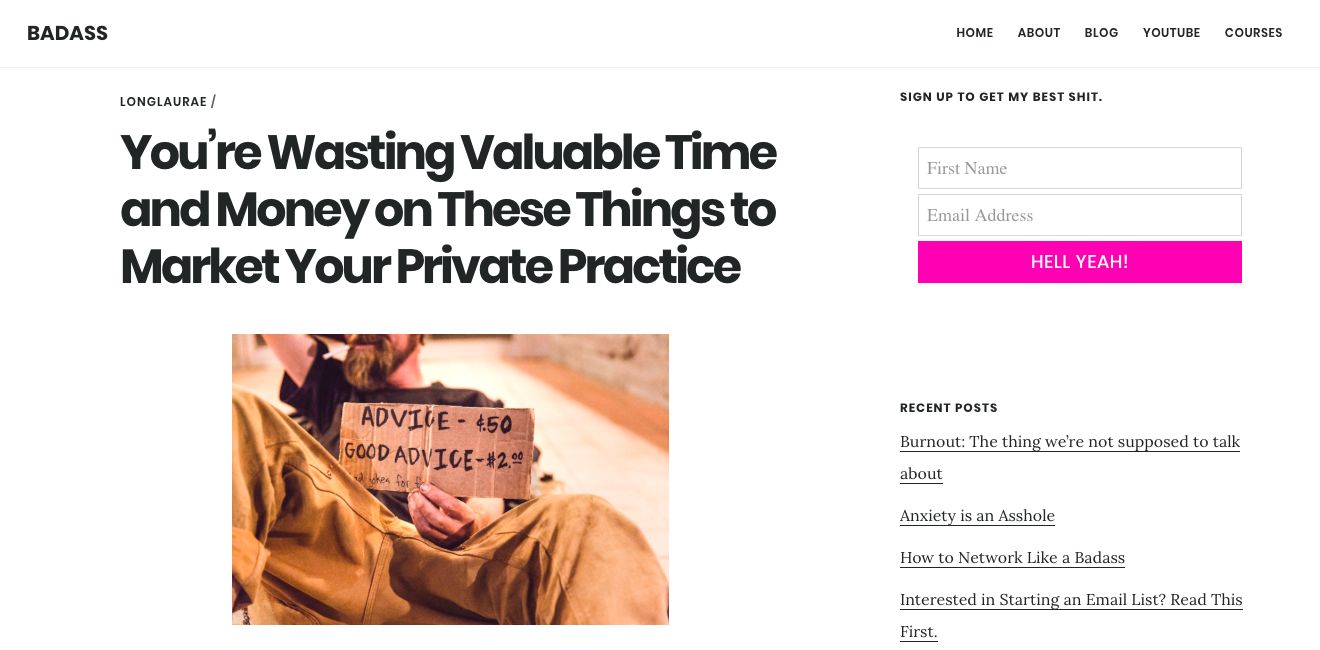
Initial reaction to that first post wasn’t huge — but it did lead to an opportunity that would provide a major boost of confidence for Laura and what she had to offer.
“This therapist reached out to me, and she was a major player in the space,” Laura remembers. “She said, ‘Hey, I really like this stuff. Would you be interested in coming on my podcast?’ She took a leap of faith with me. And that really jump-started my traffic and my subscribers, being featured somewhere that was bigger.”
Build your product: “I needed to get something out there to prove that I could”
That early guest appearance sent sometraffic and interest to Laura’s site. But it wasn’t a magic bullet for growing an audience.
“I still had a subscriber count of basically zero,” she remembers. “Maybe three people. Including my mom.”
Rather than waiting for her email list to grow into the four or five digits before creating her first product, Laura decided to build something anyway.
“I wanted to create something as quickly as possible, because otherwise I would get stuck in information overload and analysis paralysis,” she says. “I’m a perfectionist. So I knew that if I kept tweaking and tweaking and tweaking, I’d never release the damn thing. I needed to get something out there, just to prove that I could.”
The “something” that Laura put out was an early version of what would later become her premium course.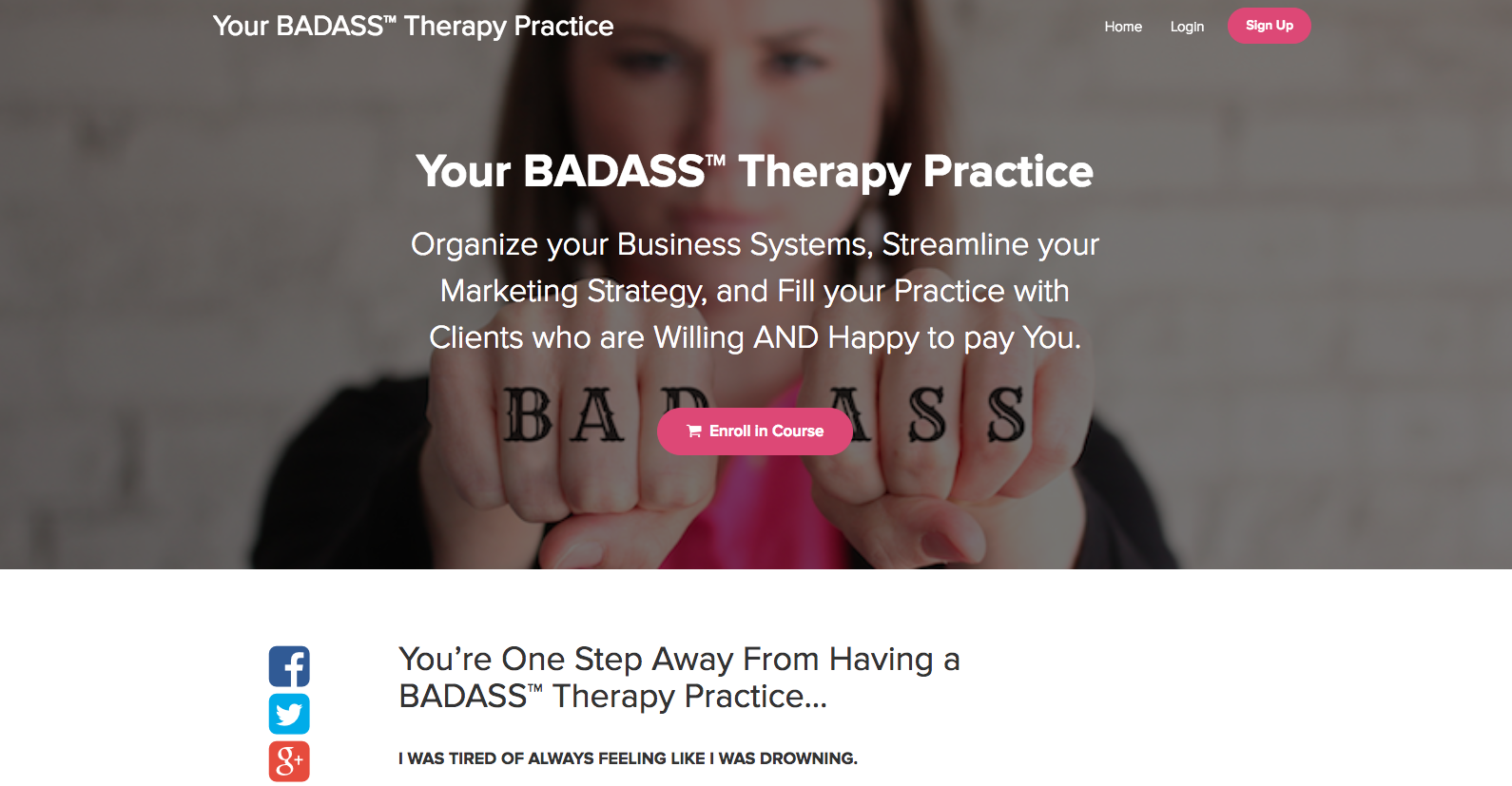
What the sales page for Laura’s flagship course looks like today.
“It was just an email course. There was nothing fancy about it. There were no videos. No pretty graphics or worksheets. Each week for eight weeks, they would get a really, really long email about a certain topic that I think is really important for therapists to know.”
The format may not have fancy. But Laura approached it like the premium course she knew she wanted it to one day be. “I treated it like it was a $2,000 course,” she says.
In total, 140 therapists signed up. “Of course, a lot of people dropped out, because when you’re not paying for something, you’re also not all that invested in it. Out of 140 signups, I would say probably only 25 to 30 really went through it,” Laura remembers. “But those people who did go through gave me lots and lots of feedback. It helped give me ideas on how to refine it and make it better.”
Those 25-30 people who completed her course now refer to themselves as the “original group of badasses” — and they became her most valuable asset when it came to marketing her course to other therapists.
“When these same people were in these Facebook groups, talking to other therapists, they would say things like, ‘I did this challenge with Laura Long and it was really great.’ And then people would come find me,” Laura explains.
“So then I was able to launch my first paid version two months later. And I charged $99.”
Pay off the loans: “I saw the light at the end of the tunnel”
With that, Your Badass Therapy Practice was officially a real, live, revenue-generating business.
Laura’s first full launch brought in about $2,000. With each subsequent launch, she raised the price. As of this writing in January 2019, the program is priced at $997.
And each time the money from a launch came in, Laura knew exactly where to send it.
“Every single launch, I took what I earned and threw it right at the debt. One time, I got a payment from Stripe of $20,000. I took 100% of it and paid one loan off entirely.”
Watching all of this money from a business she had built from scratch come in — and then go right back out again — wasn’t easy.
“It was so depressing,” she says. “But once I saw the light at the end of the tunnel, it made it easier. It took a while to see it, because it was such a large number. But it went from $77K to $61K to $55K to $45K to $20K. And I realized, ‘Oh my God: I can be out of debt by the end of 2018.’”
As that $0 balance drew closer and closer, Laura started imagining what it would be like to leave debt behind once and for all.
The best way to pay off student loans: Laura shared her excitement about being debt free with her fellow entrepreneurs in the Zero to Launch Facebook group
“I started daydreaming about what it would look like to be able to run my business because I loved doing it and not because, oh my God, I have to get $10K so I can pay off this other loan over here.”
The best way to pay off student loans: “Keep the end in mind.”
After 18 months and $77K, Laura’s dream of being free of her student debt came true in August 2018.
“It’s really great to know that whatever money I make, it’s MINE. I can do what I want with it,” she says.
Far from bringing the lights down on Your Badass Therapy Practice now that she’s done what she set out to do, Laura is taking some of her newly freed-up money and reinvesting it back into the business.
“Now that I’m out of debt, whatever money I make in my business, I’m able to be more strategic with it,” she says. “I pay someone to record and edit all of my YouTube videos, so I don’t even have to mess with it. I couldn’t have done that before, because that money needed to go into paying my debts off. I can really experiment and play with other ways of doing things.”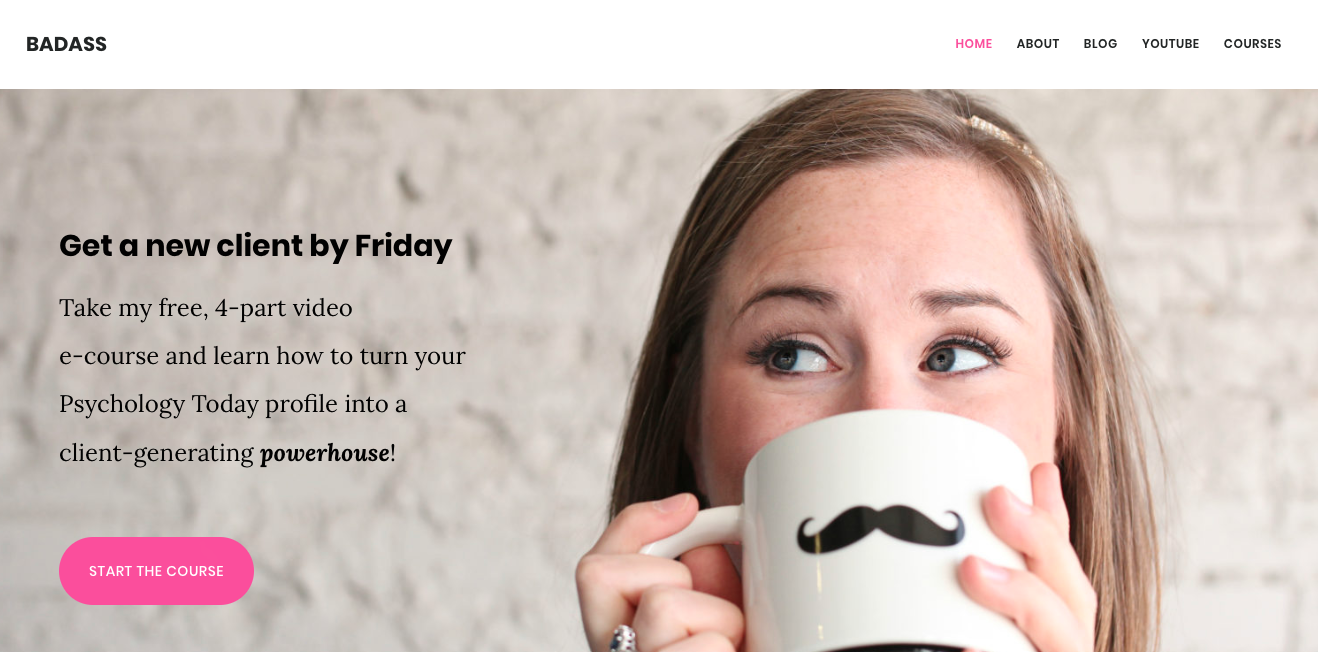
The business isn’t the only place where Laura is feeling her newfound freedom.
“This past Christmas, I was able to sponsor a kid in foster care, and I bought EVERYTHING on her wishlist,” she says. “Someone is pressure washing my house right now, because I don’t have time to do it, and it doesn’t matter to me how much it costs. I was talking to my brother — he lives in Ohio, and it’s really freaking cold where he lives. And I said, ‘Why don’t we go somewhere warm?’ So I booked a flight to Fort Lauderdale — just randomly booked a flight — and I didn’t have to think twice about the price.”
When I ask Laura what advice she would give to herself of three years ago — the one who was looking at that mountain of debt, feeling sick to her stomach wondering how on earth she would ever pay it off — it’s these details that she highlights.
“Picture what it will look like to be out of debt, and NOT be 55. Imagine going on a vacation with your family that you can pay cash for, and you’re in your 30s. Think about what it will be like to have millions of dollars in your retirement at 60,” she says.
“Keep the end in mind. Because it is so, so worth it.”
You CAN start a business
At GrowthLab, we’ve helped thousands of people — Laura included — start and grow their online business. And we can help you, too.
Our Ultimate Guide to Starting an Online Business covers the exact same strategies and tactics that Laura and thousands of other entrepreneurs like her used to get their online business off the ground.
Budgeting is outdated. Build your conscious spending plan to take control of your finances and spend guilt-free on the things you love. Find out how in our FREE guide.
Written by Ramit Sethi
Host of Netflix's "How to Get Rich", NYT Bestselling Author & host of the hit I Will Teach You To Be Rich Podcast. For over 20 years, Ramit has been sharing proven strategies to help people like you take control of their money and live a Rich Life.
